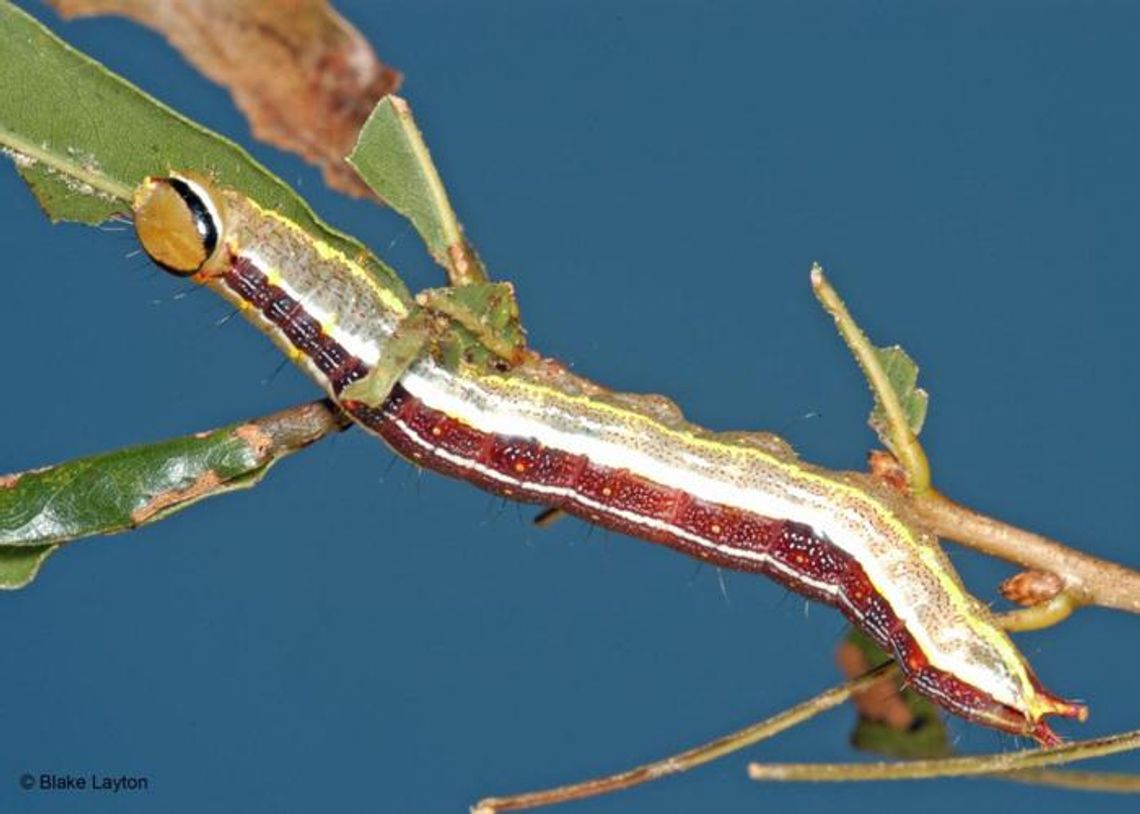.jpg)
By Doug Carter, Rankin County Extension Agent
Some years, usually about this time of the year, we begin seeing defoliation of oak trees. Variable Oakleaf Caterpillars are common on oaks and other hardwoods throughout the state, but especially in the northern part of the state. Normally, their populations are kept in check by a variety of beneficial insects and diseases, including tiny wasps that parasitize their eggs. But during outbreak years these caterpillars can cause severe, and complete defoliation of oaks and other hardwoods. These caterpillars have two generations per year in the south, and second-generation caterpillars may cause additional defoliation of trees in other locations. As the name suggests, variable oakleaf caterpillars vary considerably in color, but the dark ‘sideburns” on either side of the head capsule are good identification clues. Few other caterpillars have these. Mature caterpillars are about 1.5 inches long.
Controlling these caterpillars is usually impractical on large landscape trees because 1) trees are too big to spray, 2) the risk of off target spray drift is too great, and 3) most of the damage has already been done by the time infestation is noticed and the infestation has almost run its course. Fortunately, healthy hardwood trees usually recover, even from being completely defoliated, without suffering serious long-term injury. Keeping trees watered during periods of drought will aid in recovery. Insecticides containing Spinosad (Fertilome, Green Light, Bonide, Monterey, and a few others sell homeowner formulations, and Conserve is for commercial applicators), or chlorantraniliprole ( Acelepryn for commercial applicators) can be sued to control caterpillars on small or high value trees in cases where such applications are practical.
Source: “Variable Oakleaf Caterpillar”, Bugs Eye View, July 2017, Mississippi State University Extension


Comment
Comments